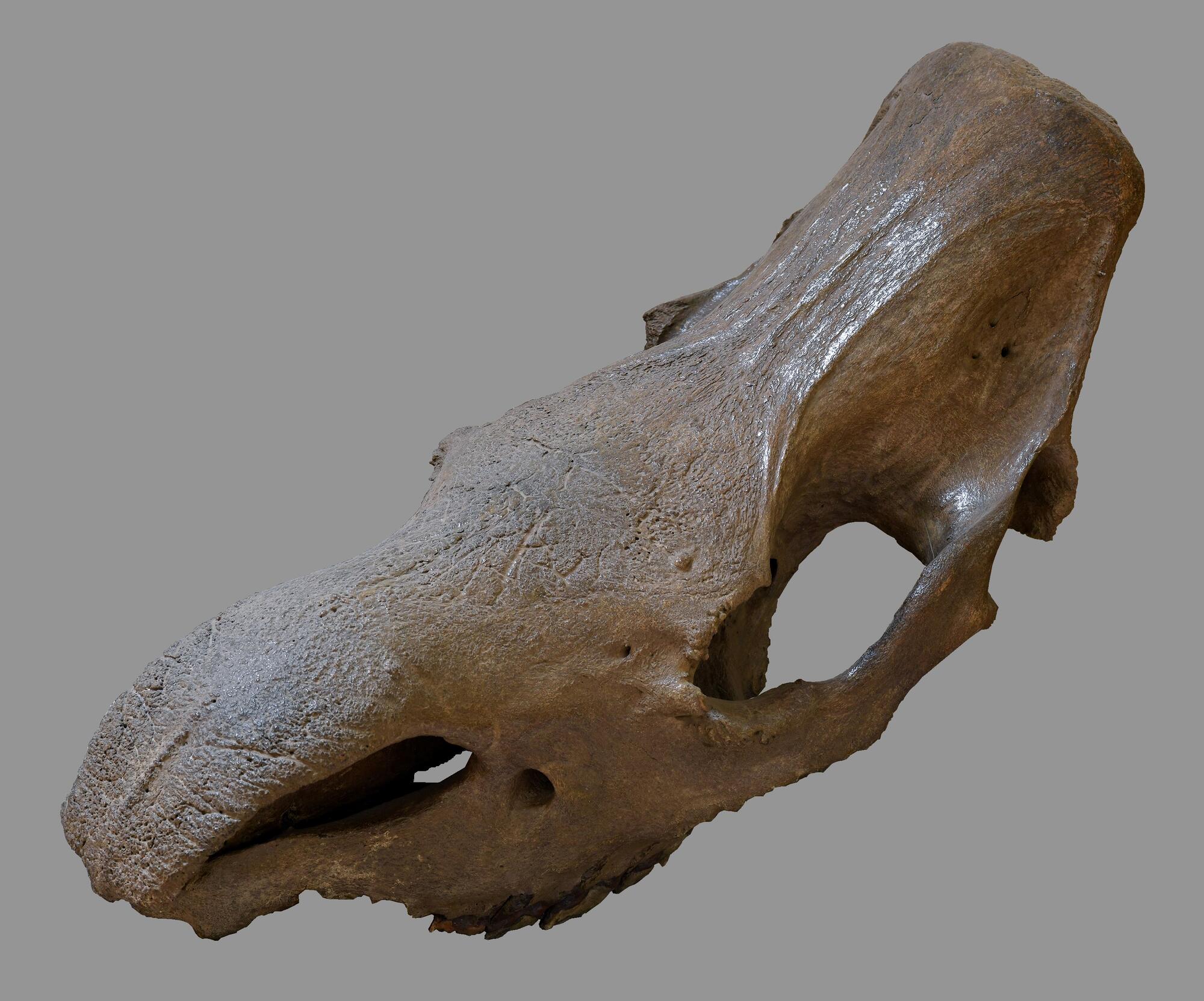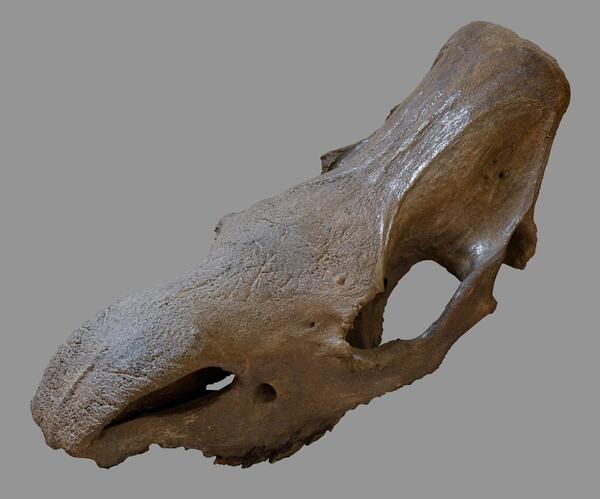Unfortunately, many different species of unique animals are completely extinct today. The sad list gained a new member many years ago in the woolly rhinoceros with its characteristic rough coat and thick undercoat. Its top coat of fur could be yellow or light-brown in color. The largest woolly rhinoceroses could reach two meters at the withers, up to four meters in length and weighed up to three and a half tonnes. The calluses around the animals’ foreheads and noses were ossified, which served as the foundation for their two horns. The horns themselves were solid growths of tubes fused together by conjunctive tissue, those tubes being a keratin derivate of mammal skin. The massive laterally flattened horn which stretched out from the rhinoceros’ nose reached 130 centimeters in length and weight 15 kilograms. The smaller horn, which was positioned behind the larger one, could reach 50 centimeters in length. Males and females both had these powerful horns, which were considered to be a fearful weapon due to their resilient composition. Other such appendages have been noted in nature, which makes it easier for the animals to pass through thick overgrown vegetation and provides them with protection against predators. These ancient rhinoceroses would often tread through flooded patches of vegetation and were frequently attacked by predators. Woolly rhinoceroses were powerful, thickset animals, with short fat legs, a wide head and large shoulders.
The woolly rhinoceros was similar in appearance to the rhinos we see today, but its body structure and composition differed slightly. Besides this, as we can see from the name, they were covered by a thick and long coat, which adapted to being in cold tundras with a harsh climate. Rhinoceroses living during the ice age did not have fangs or incisors. Their chewing teeth were hollow inside and covered with a thick layer of enamel. They had the ability to grow continually throughout their life and were well adapted to feeding on coarse grassy vegetation which they would tear out of the soil with the jagged surface of their lips.
Orsk is situated in a region which is practically in the center of the Eurasian Steppe, with the southern spurs of the Urals nearby. Between 40 and 100 thousand years ago, (during Jurassic Glaciation and the paleolithic era), the glacier’s border extended into Prikamye, and the modern territory of the Orenburg Region was a pre-glacial zone with a tundra landscape, inhabited by mammoths, bisons, woolly rhinoceroses and other animals. The Iriklinskiy sites one to five in the Kvarkenskiy area are where hunters of mammoth fauna stayed in the Orenburg Region. They are short-term workshops with traces of cultural remnants belonging to the earliest period of the late Paleolithic era.
The woolly rhinoceros was similar in appearance to the rhinos we see today, but its body structure and composition differed slightly. Besides this, as we can see from the name, they were covered by a thick and long coat, which adapted to being in cold tundras with a harsh climate. Rhinoceroses living during the ice age did not have fangs or incisors. Their chewing teeth were hollow inside and covered with a thick layer of enamel. They had the ability to grow continually throughout their life and were well adapted to feeding on coarse grassy vegetation which they would tear out of the soil with the jagged surface of their lips.
Orsk is situated in a region which is practically in the center of the Eurasian Steppe, with the southern spurs of the Urals nearby. Between 40 and 100 thousand years ago, (during Jurassic Glaciation and the paleolithic era), the glacier’s border extended into Prikamye, and the modern territory of the Orenburg Region was a pre-glacial zone with a tundra landscape, inhabited by mammoths, bisons, woolly rhinoceroses and other animals. The Iriklinskiy sites one to five in the Kvarkenskiy area are where hunters of mammoth fauna stayed in the Orenburg Region. They are short-term workshops with traces of cultural remnants belonging to the earliest period of the late Paleolithic era.
Unlike their modern descendants, woolly rhinoceroses were not herd animals, preferring to roam in pairs, or even just with their brood. Due to their ill-natured character and powerful horns, the giants were of no interest to human hunters. Due to the rarity of attacks faced by these animals, their bones and remains are almost impossible to find in Paleolithic sites.



